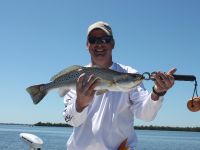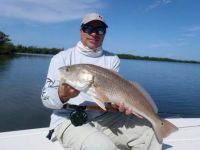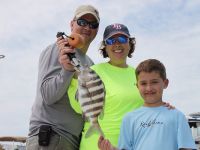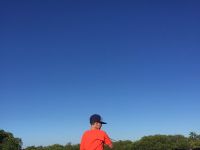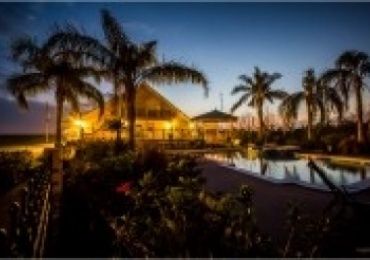From: 11/17/2017
To: 11/17/2017
Type of Water: Saltwater
Species: Jacks, Redfish, Spotted Seatrout, Sheepshead
November 2017
For the most part, this month marks the beginning of a winter pattern. The combination of cyclical low tides combined with strong breezes associated with northern fronts change everything. In addition to dropping the temperature, the predominant northerly winds also push water out of the harbor making low tides even lower. This is the time small shallow draft skiffs have an advantage as many areas become just too difficult to navigate safely. Even with the shallower drafting skiffs, caution should be foremost as its way too easy to damage your boat as well as the shallow grass flats. In addition to changing the landscape, the weather is about to change the habits of our snook for a while. Being a sub-tropical species, they are particularly vulnerable to cold temperatures. View more...November 2017
For the most part, this month marks the beginning of a winter pattern. The combination of cyclical low tides combined with strong breezes associated with northern fronts change everything. In addition to dropping the temperature, the predominant northerly winds also push water out of the harbor making low tides even lower. This is the time small shallow draft skiffs have an advantage as many areas become just too difficult to navigate safely. Even with the shallower drafting skiffs, caution should be foremost as its way too easy to damage your boat as well as the shallow grass flats. In addition to changing the landscape, the weather is about to change the habits of our snook for a while. Being a sub-tropical species, they are particularly vulnerable to cold temperatures. They don’t like it when the water temperature drops below 70, and below 60, can be downright lethal. For this reason, I’ll target redfish and spotted sea trout. It’s possible we won’t see this extreme until next month but you just never know. When the weather does cool, snook will begin moving off the flats and up creek and river systems where they can find more stable water temperatures. Redfish and trout aren’t bothered by the cold and they’ll stay out on the flats; or, what’s left of the flats on low water. Under these conditions, the fish will gravitate toward the sand holes that are mixed in with the sand and grass. On the higher tide stages, they’ll move around on the flats; but, when the water drops out, they’ll have no choice but to drop into the slightly deeper holes. Deeper is a relative term and on the flats in and around Charlotte Harbor this can measure in inches. These depressions are referred to as “potholes” and they’re much easier to find when the sun gets up a bit. It’s more or less like sight fishing. There are flats all over that contain this kind of bottom structure; however, my favorite areas also include good amounts of turtle grass. Three areas in particular, Lemon Bay, and Gasparilla and Pine Island Sound hold some of my favorite flats. I’ll downsize my baits and switch out from larger 1/0 and 2/0 baitfish patterns to smaller #2 or #1 shrimp and crab imitations. The Clouser minnow is also a great choice. The cooler water temperatures push the scaled sardine and threadfin herring offshore looking for more stable water temperatures. This forces our game fish to change diets and they’re left with no choice but to root out smaller localized prey. On any given day, the wind will dictate what size rod I’ll throw. For example, if it’s blowing 15 or 20, I may go up to a nine-weight. If the wind lies down, I love throwing the six-weight. If I could only take one rod, it would probably be an eight-weight. I like a nine-foot saltwater monofilament leader tapered down to 15 or 20 pound tippet. On low water, where the fish are laid up away from the mangroves, the lighter tippet is preferable.
On the flip side, there are going to be days between fronts where the wind cooperates and that’s the perfect time to get out those boats that can’t navigate the skinny water. Pompano should be all over the hard bottom off cape Haze Point and black drum are a good bet at the U.S. 41 Bridge. A piece of blue crab is great bait. All in all, it’s tough not to stick your nose out of one of the passes and idle around within a mile of the beach between Boca Grande and Little Gasparilla Pass. Keep an eye out for birds; you’ve got a shot at kingfish, bonita, spanish mackerel, big jacks and blacktip sharks.
Until next month, good tides.




